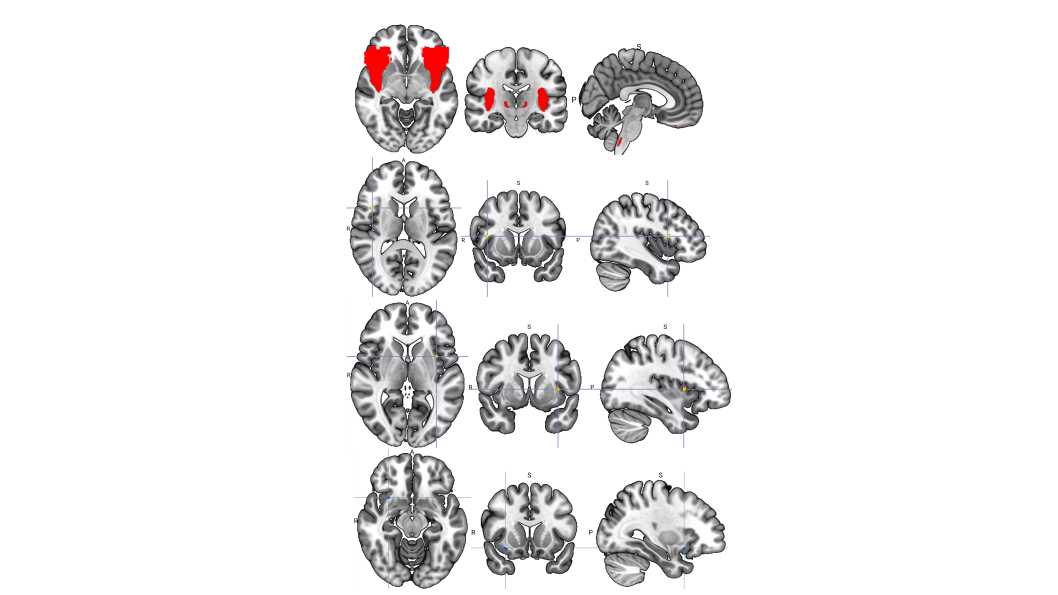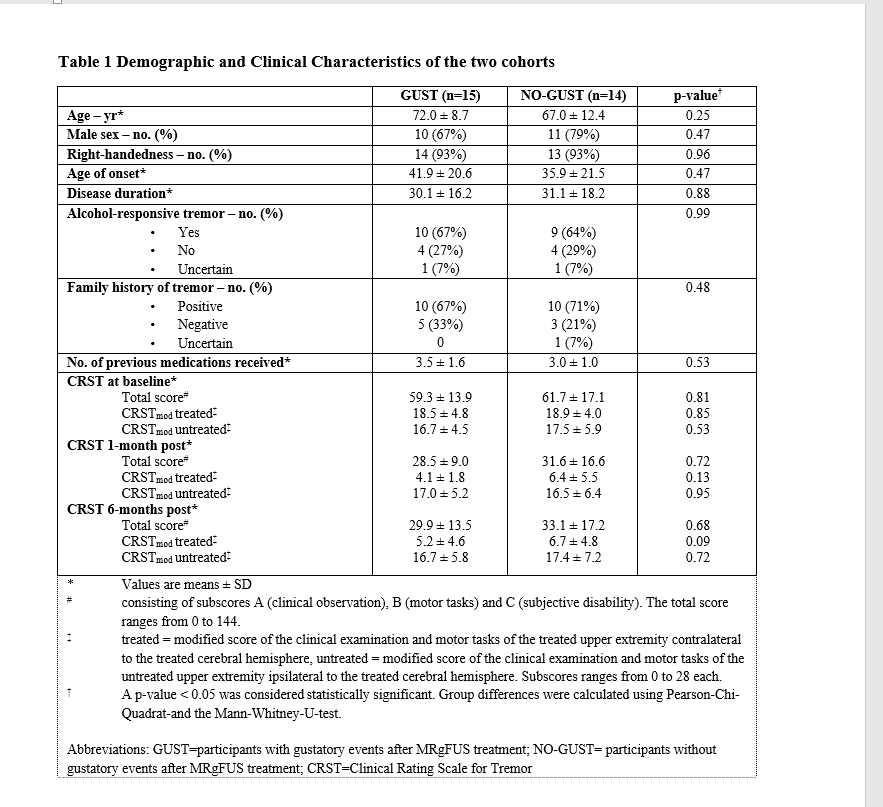Category: Tremor
Objective: Identification of structural brain alterations in patients with essential tremor (ET) reporting taste disturbances after magnetic resonance-guided focused ultrasound (MRgFUS) treatment.
Background: Paraesthesias and gait disturbances are common adverse events observed after MRgFUS, both in literature and in our cohort affecting up to 50% of patients. Taste disturbances have been reported in much lower percentages and typically emerge later in the course of follow up.
Method: We compared the clinical outcome and imaging findings of 15 ET patients who reported taste disturbances (gustatory events, “GUST”) and 14 ET patients without taste changes (“NO-GUST”), one and six months after MRgFUS. To this end we analyzed diffusion-tensor-imaging (DTI), acquired prior, 1-month and 6-months after MRgFUS. After pre-processing, fractional anisotropy (FA) maps were created for all time points and non-linearly registered to the standard MNI space. A linear mixed effect model was applied to assess the within subject and between group changes for all three timepoints. Results were reported at p<0.001.
Results: Demographics and clinical outcome did not differ significantly between groups (Table1). The Clinical Rating Scale for Tremor revealed a significant tremor reduction of the treated upper extremity after MRgFUS (Friedman’s test GUST: p<0.001, NO-GUST: p<0.001). Significant group by time interaction effects were found for FA in the left and right insular region and the right frontal operculum. Post-hoc comparisons reported reduced FA bilaterally in the insulae in patients with GUST compared to NO-GUST (Figure1). Conversely, increased FA was evident in the right frontal operculum in GUST.
Conclusion: MRgFUS is a recently developed treatment option for patients with medication-refractory ET. Herein, the posteroventral part of the ventrolateral nucleus of the thalamus (VLpv) is the potential target for thermoablation. The parvocellular division of the ventral posterior medial nucleus (VPMpc) is considered the thalamic relay of the human gustatory pathway, terminating in the gustatory cortex, which is presumably located in the anterior and middle insula and the overlying frontal operculum. Despite precision targeting, adjacent nuclei, such as the VPMpc, may also be affected during the lesion-procedure. Indeed, in patients with taste disturbances after MRgFUS, insula and frontal operculum displayed altered FA.
To cite this abstract in AMA style:
V. Purrer, N. Upadhyay, V. Borger, C. Schmeel, H. Boecker, U. Wuellner. Alterations of the gustatory circuit underly taste disturbances after lesional tremor therapy with MRgFUS [abstract]. Mov Disord. 2022; 37 (suppl 2). https://www.mdsabstracts.org/abstract/alterations-of-the-gustatory-circuit-underly-taste-disturbances-after-lesional-tremor-therapy-with-mrgfus/. Accessed April 26, 2025.« Back to 2022 International Congress
MDS Abstracts - https://www.mdsabstracts.org/abstract/alterations-of-the-gustatory-circuit-underly-taste-disturbances-after-lesional-tremor-therapy-with-mrgfus/


